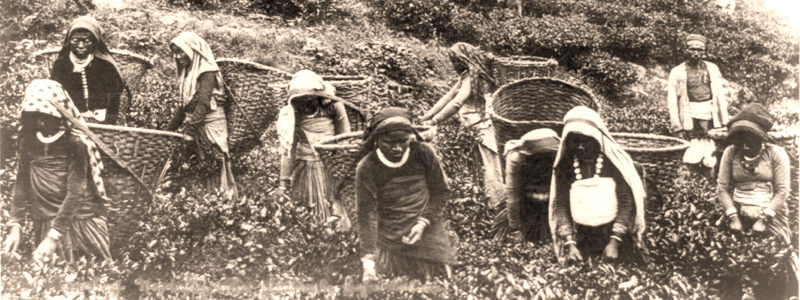
About Black Tea Varieties
Darkest and Fermented

Black tea is the most popular of tea types accounting for over 90% of all tea consumed in North America. Within the black tea family, there are a large number of varieties distinct to the country, region and even the plantation. What sets it apart from green, white and oolong is how it is crafted for consumption.
Crafting a leaf you can drink
The leaves are first withered by air-drying. Then black teas are processed in one of two ways, CTC (Crush, Tear, Curl) or orthodox.
The CTC method produces leaves of fannings or dust grades that are commonly used in tea bags but also produces higher grades such as BOP (Broken Orange Pekoe) and GFBOP (Golden Flowery Broken Orange Pekoe). Typically the CTC process is handled by machine. This method is effective for producing a better quality product from lower quality leaves of consistently dark color.
A side note. Orange Pekoe refers to the grade of the tea. "Pekoe" may have some Chinese origins. "Orange" most likely refers to the color of the oxidized leaf before drying. It does not refer to orange flavorings.
Orthodox processing is done either by machines or by hand. Hand processing is used for high quality teas. While the methods used in orthodox processing differ by tea type, this crafting results in the high quality loose tea sought by many today. The tea leaves are allowed to completely oxidize. The withered tea leaves are then rolled either by hand or mechanically. Next, the leaves are fermented (oxidation of enzymes and polyphenols within the leaf) under controlled temperature and humidity. The level of oxidation determines the flavor, aroma and color of the tea; fully oxidized becomes black tea. Fermenting can be done on the floor in batches or on a conveyor with air flow for proper oxidation and temperature control. Since oxidation begins at the rolling stage, the time between these stages is also an important factor in the flavor of the tea. Tea producers vary oxidation levels to give unique charcteristics to the final product.
Then the leaves are dried or fired to arrest the oxidation process. Moisture in the leaves at this point is reduced to about 3%. Finally, the leaves are sorted and graded according to their size with the use of sieves. The tea is now ready for packaging. Correctly processed and packaged black tea can last for several years without loss of flavor.
Typical black tea types are Assam and Darjeeling from India; Keemun and Yunnan from China. Try our flavorful black tea blends!